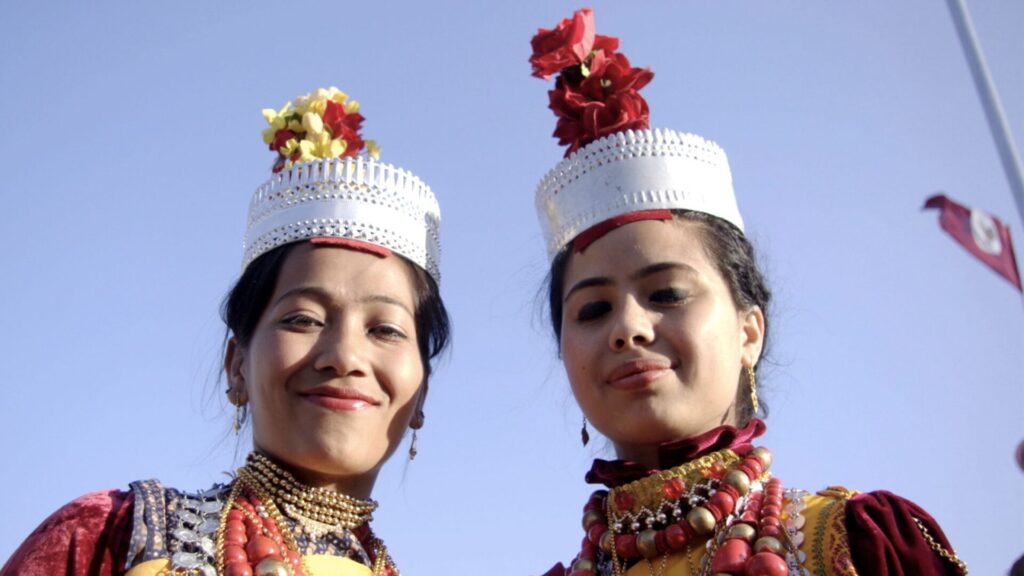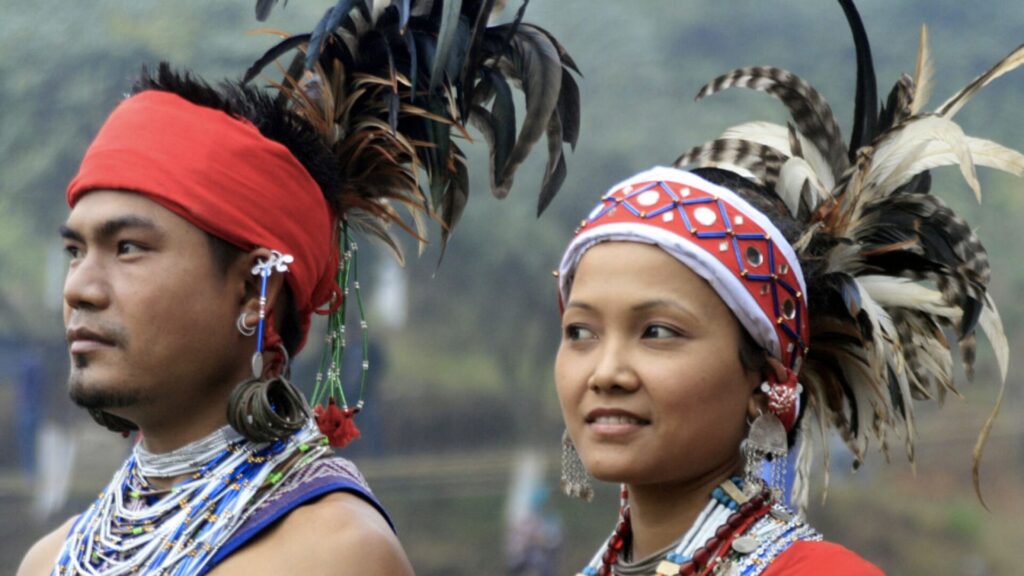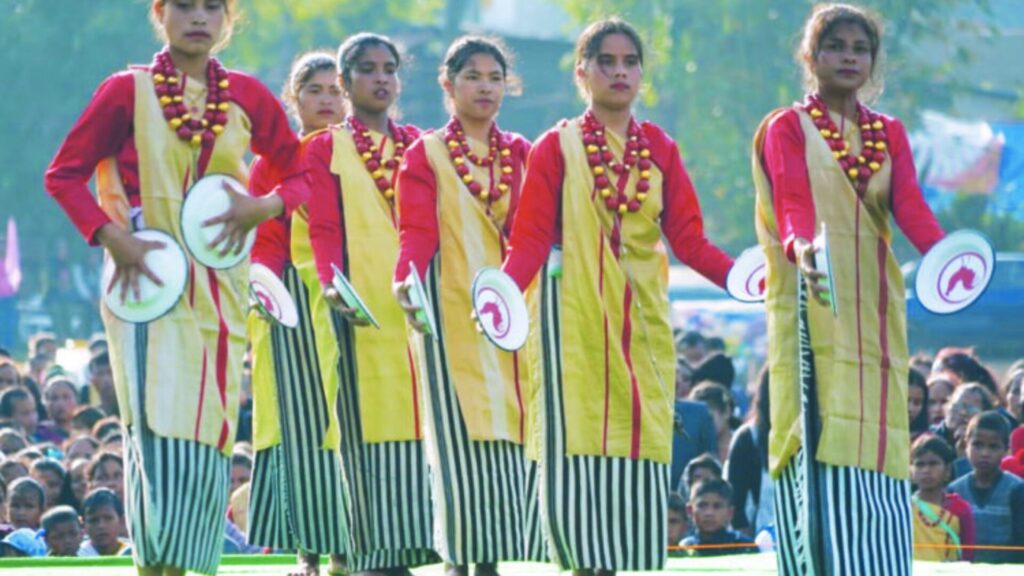India is a country of diversity. The majority of Indian states follow patriarchy, but in the northeastern state- Meghalaya, still prevails the matrilineal society.

The state of Meghalaya lies in the northeastern region of India. Cherrapunji, a town in the East Khasi Hills, holds the record for the most rain in a calendar month, while Mawsynram- a village near Cherrapunji, holds the record for the most rainfall in a year. The state has a wide variety of plant and animal life. The natural beauty of this area is only part of what draws visitors here; the region’s retained history of matrilineality is also a topic of fascination.
Land Where the Women Lead: The Matrilineal Society of Meghalaya
The three largest ethnic groups of Meghalaya are the Khasi, the Garo, and the Jaintia. People of all these tribes practice matrilineality. All of a family’s wealth is passed down through the female line in a matrilineal society. It is indeed a fascinating cultural contrast to be seen in a male dominant country like India.
Matrilineal Society of the Khasis

Although Khasis, Garos, and Jaintias- all follow matriarchy, the Khasi tribe is said to be one of the largest surviving matrilineal cultures in the world. Khasi people are believed to be descendants of East Asian Mon- Khmer people. There are many legends, myths, and stories behind the culture and traditions of the Khasis. References to the matrilineal culture of Jaintia and Khasi Hills are made in the epic of Mahabharata as Nari Rajya or the Matrilineal Land. When Khasi emperors had to onboard for wars & battles, their wives were left at home to take care of their children and other family members, and started the matrilineal culture of Khasis. Women were in charge of their homes and responsible for all the duties of caring for their families.
Status and Role of Women
Khasi women enjoy a more powerful social position than they do in the rest of India. In most countries, the eldest son inherits the family business and the family home, but when it comes to the Khasis, the youngest girl takes over as head of the household and inherits everything. In Khasi, Ka Khadduh is used to refer to the youngest daughter. It is customary for the groom to join the bride and her family at her home after the wedding. The children take the name of the mother or the status she holds. While a few states are notorious for female infanticide and the low sex ratio in the country, the birth of a daughter is cause for celebration among the Khasis.
Women of the Khasi tribe are responsible for taking care of their children and it is the duty of the youngest daughter (Khadduh) to take care of their parents in old age. The women are free to run their family businesses, enjoy total security, dress up as they like, and attend church (as majority in Meghalaya is Christian). Most of them don’t get married and are not even forced to. They can perform cross- cousin marriage. Pre-marital sex by women is not a taboo here and is well accepted by the society. But yes, adultery is not welcomed and therefore, a punishable crime.
The Culture of the Garos

The Garo people, are a Tibeto-Burmese ethnic group. The Garos are a matrilineal society, making them extremely rare. Clan titles are passed down through mothers in this society. The youngest daughter (nokmechik) traditionally receives her mother’s estate. At the onset of puberty, male children are sent to the village bachelor dormitory (nokpante) for training. The male moves into the wife’s home after the wedding.
The Garo word for “bachelor pad” or “single guy’s house” is “Nokpante.” There was a ban on females accessing the Nokpante. There was a stigma attached to any lady who disregarded this norm, calling her “marang nangjok.” However, these instances are rarer today.
The Garo culture is matrilineal but not matriarchal. Even though women make up the majority of property owners, men control society and the majority of household decisions.
Traditional names persist among the Garo people. Modern-day Garo society, however, has had a significant Christian cultural impact.
Matrilineality: Culture of the Jaintias

Image Source: The Shillong Times
The Pnar is a sub-tribal group of the Khasi people that live in Meghalaya, India. They are also known as the Jaintia. Matrilineal descent is practiced by the Pnar people. They communicate with one another using a language known as Pnar, which is a member of the Austro-Asiatic language family and is quite related to the Khasi language.
The West Jaintia Hills District and the East Jaintia Hills District in the state of Meghalaya in India are the traditional homes of the Pnar people. They refer to themselves as “Ki Khun Hyniew Trep” (7-hut Children), which is the literal translation of their name. The Chad Sukra, Behdeinkhlam, Chad Pastieh, and Laho Dance festivals are their most important celebrations.
The inhabitants of Meghalaya have created a culture that is equally as stunning and distinctive as the state’s breathtaking natural scenery. In a world in which women are not accorded equal rights and are sometimes subjected to discrimination, the existence of such a spectacular matrilineal culture appears to be a mystery. This is what sets the people of Meghalaya apart from those of other countries, and they certainly have reason to be proud of their heritage.